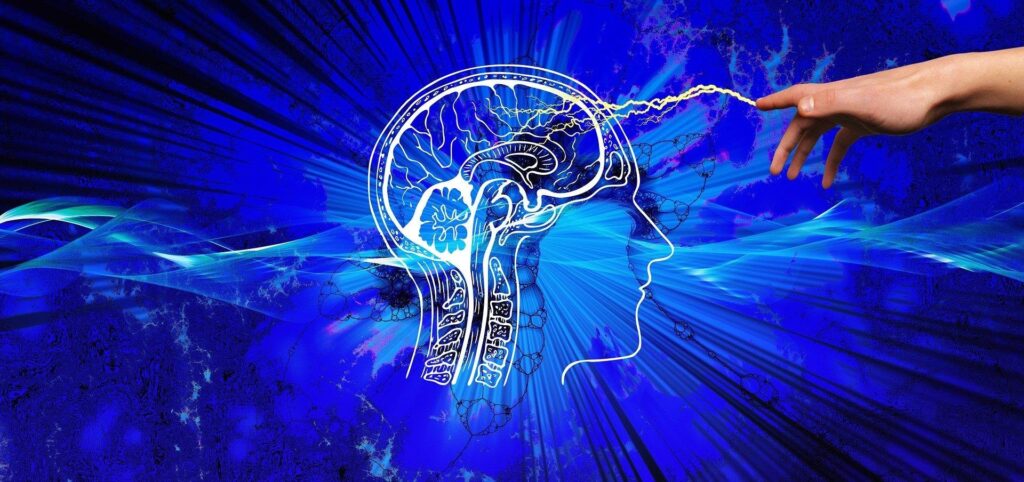
A healthy mind is an ultimate ingredient for a happy life. Many people across the globe prefer mental peace over physical tranquility, thereby, indicating the importance of a good mood. The greatest obstacles to mental health are anxiety and depression.
Getting anxious about daily errands is completely normal and necessary (especially for procrastinators like us!) to get things done, however, anxiety disorders present a different story. If you suffer from a persistent feeling of fear and anxiety you might be suffering from an anxiety disorder.
Anxiety disorders are identified as “real infirmities” that need medical attention. Generalized anxiety disorder (GAD) is a common anxiety disorder that affects an estimated 2.7% of adults in the United States. (1)
Similarly, depression is also identified is quantified as a sickness that demands therapy. A prevalent type of clinical depression is bipolar disorder. Sufferers of this malady have extreme variations of mood and there is currently no single completely effective treatment to help them out. Well, CRISPR treatment has emerged as a ray of hope for a number of ailments. The list of disorders that can benefit from the CRISPR technique also includes bipolar disorder (depression).
Is Bipolar Disorder A Type Of Depression?
Bipolar disorder is an imbalance/disorder in the brain that brings about undulations in a person’s:
- Mood
- Energy
- Functional ability
People suffering from bipolar disorder experience what is called mood episodes. The intensity and duration of these mood episodes are a good measure of the extent of the disease. (2)The mood episodes are characterized by periods of depressive (sad) states that are accompanied by extremely happy or extremely irritated states i.e. mania.
As per the National Institute of Mental health, an estimated 2.8% of US adults suffer from bipolar disorder. Patients report extreme shifts in mood, reduced self-esteem (when maniac), and sleep problems. (3)
Types Of Bipolar Disorder
Further stratification of the disease reveals that there 3 different types of bipolar disorder including:
- Type Ⅰ
- Type Ⅱ
- Type Ⅲ
Type is the most severe and is associated with an increased tendency to commit suicide. It is considered one of the most common severe mental illnesses as it proves fatal in a high proportion of patients (due to complications). (4)
Causes Of Bipolar Disorder
It has been found by medical professionals that bipolar disorder runs in families. A whopping 80-90% of individuals with bipolar disorder have inherited it from their families.
Genetic Causes
Family studies have revealed that certain chromosomal regions have been found linked to bipolar disorder/ these positional candidate genes have shown strong evidence of association with bipolar disorder. (5)
A list of candidate genes based on authentic studies includes: (6)
- BDNF
- DAOA
- DISCI
- GRIK4
- SLC6A4
- TPH2
Bipolar disorder type Ⅰ is associated with other mental illnesses such as schizophrenia.
Trigger Factors
It is clear that depressive disorders such as bipolar disorder have a genetic predisposition, however, there are certain external factors that can trigger the condition. These trigger factors include:
- Stress
- Sleep deprivation
- Drug abuse
- Excessive alcohol consumption
The above-mentioned environmental factors have the ability to trigger mood episodes in vulnerable individuals.
Treatment Of Bipolar Disorder
It is often tricky to diagnose bipolar disorder. However, once diagnosed, it is treated with a myriad of treatment modalities. A psychiatrist (mental health doctor) may suggest any one or combination of the following therapies:
- Medications (antidepressants, antipsychotics, anti-anxiety)
- Substance abuse treatment
- Counseling
- Psychological therapy (CBT, family-focused therapy, etc.)
CRISPR: A Ray Of Light For Depression Patients

The potential applications of CRISPR in neuroscience might be a shock to you. But behold! This modernized technique of genetic editing can solve a lot of mysteries of the universe.
The CRISPR-Cas9 system is a ray of light for neurocognitive patients.
CRISPR can one day treat bipolar disorder patients. Currently, there are two obstacles to gene therapy for bipolar disorder. Firstly, it is hard to identify the specific gene loci responsible for the development of this depressive disease. The second difficulty is in treating the genes in a living, interacting human being.
Clustered regularly interspaced short palindromic repeats (CRISPR) paired with CRISPR-associated protein9 (Cas-9) have provided a more efficient and time-saving way for genome-wide screening. (7)
The CRISPR technique has shown promising results in the functional characterization of the genetic variants linked to psychiatric disease. This new method of gene editing can help researchers locate the culprit genes better. (8)
Research by Wang et al. Suggests that CRISPR/Cas9 treatment technique can help improve neuropsychiatric conditions. This very research found out that mutation at the CHD8 gene is linked to autism spectrum disorders, schizophrenia, and bipolar disorder. Therefore, the knockout of this gene using the CRISPR technique can enhance treatment. (9)
GABA Receptors
Multiple teams of researchers are spending sleepless nights to find the link between GABA neurotransmitters and psychiatric disorders and how CRISPR can be of help. The rapid progression and advancement in the CRISPR technique have motivated researchers to find the application of the gene-editing tool in correcting neurotransmission.
Fujihara and colleagues found out that elimination of the Gad1 gene in schizophrenic rats via the CRISPR/Cas-9 system leads to complex changes in behavior. (10)
This study clarifies that genetic alteration can directly change the behavior and attitude of the subjects. Therefore, it can act as a basis for further research, and eventually, scientists will come up with the application of CRISPR/Cas9 in the treatment of bipolar disorder.
Current Challenges To CRISPR
Despite the promising results in animal models, the CRISPR technique can not be readily adopted in treating neuropsychiatry disorders of humans. This is because the DNA-cleaving machinery of the CRISPR/Cas-9 system isn’t very safe.
Your neurons have a very active response to any induced DNA damage. Thus, even the slightest DNA cut by the Cas9 enzyme can lead to toxicity and eventually cell death.
The good news is that biologists and researchers are constantly finding ways to prevent toxicity and induce safe changes in the neuronal setup using CRISPR. We are hopeful that one day we will be able to treat bipolar disorder by using the CRISPR technique.
Conclusion:
Bipolar disorder is a type of depressive disorder that is characterized by episodes of mania. The disease has a genetic basis and runs in families in 80-90% of the cases. CRISPR/Cas9 system has been used to identify the specific genes involved in the development of neuropsychiatry disorders (schizophrenia, autism, and bipolar disorder) in animal models and cadavers. However, the hyperactive response of the alive neurons to CRISPR/Cas9-induced DNA cutting leads to toxicity and cell death but one day scientists will be able to get over it.
Work Cited:
- https://www.nimh.nih.gov/health/topics/anxiety-disorders
- Radua, Joaquim, Heinz Grunze, and Benedikt L. Amann. “Meta-analysis of the risk of subsequent mood episodes in bipolar disorder.” Psychotherapy and psychosomatics 86.2 (2017): 90-98.
- Rantala, Markus J., et al. “Bipolar disorder: An evolutionary psychoneuroimmunological approach.” Neuroscience & Biobehavioral Reviews (2021).
- Baldessarini, Ross J., and Leonardo Tondo. “Suicide risk and treatments for patients with bipolar disorder.” Jama 290.11 (2003): 1517-1519.
- Escamilla, Michael A., and Juan M. Zavala. “Genetics of bipolar disorder.” Dialogues in clinical neuroscience 10.2 (2008): 141.
- Barnett, Jennifer H., and Jordan W. Smoller. “The genetics of bipolar disorder.” Neuroscience 164.1 (2009): 331-343.
- LaFlamme, Brooke. “A CRISPR method for genome-wide screening.” Nature Genetics 46.2 (2014): 99-99.
- Matos, Marliette R., et al. “Integration of CRISPR-engineering and hiPSC-based models of psychiatric genomics.” Molecular and Cellular Neuroscience (2020): 103532
- Wang, Ping, et al. “CRISPR/Cas9-mediated heterozygous knockout of the autism gene CHD8 and characterization of its transcriptional networks in cerebral organoids derived from iPS cells.” Molecular autism 8.1 (2017): 11.
- Fujihara, Kazuyuki, et al. “CRISPR/Cas9-engineered Gad1 elimination in rats leads to complex behavioral changes: implications for schizophrenia.” Translational psychiatry 10.1 (2020): 1-13.
